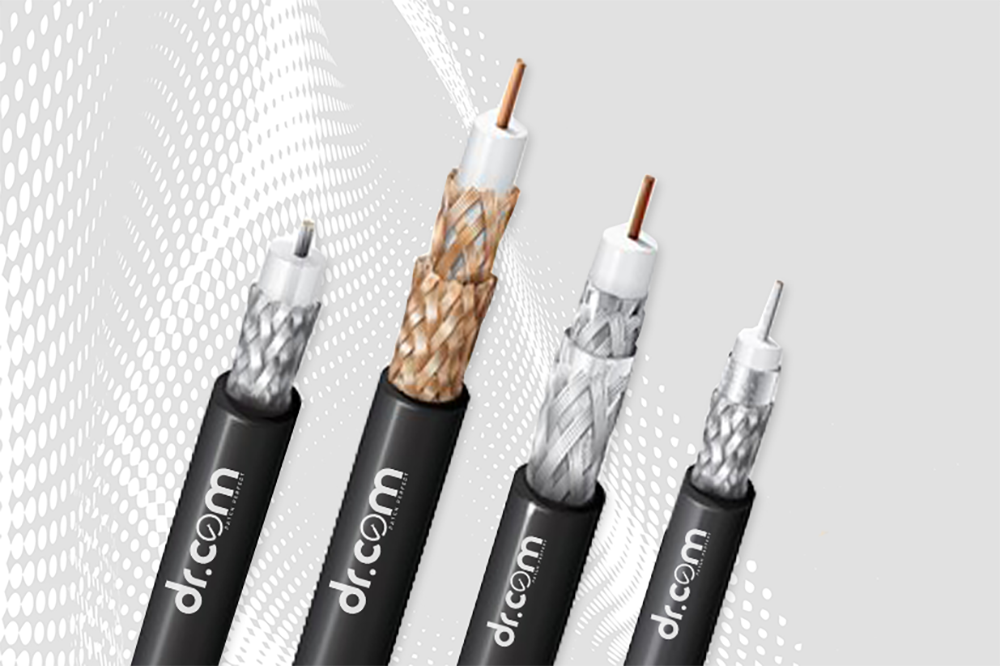Unleashing the Power of Coaxial Cables
Coaxial cables are an essential part of modern audio and video equipment, and their usage has become more prevalent due to continuous advancements in cable wire technology. These cables can carry high-frequency signals that are critical for enhancing audio and video output, making them indispensable for modern audio and video devices. In this blog, we will discuss in detail what coaxial cables are, their types, usage, advantages, disadvantages, and why you should choose dr.com for your coaxial cable needs.
What are Coaxial Cables?
A coaxial cable is an electrical cable that can carry a high volume of digital data in the form of signals. They are designed to transmit signals with minimal interference and signal loss. A coaxial cable consists of four basic parts:
- Inner core conductor (the central conductor)
- Dielectric, which separates the inner and outer conductors
- Outer conductor (shield)
- Jacket, which is the outer polymer layer of the cable and protects the parts inside.
Coaxial cables use a copper conductor and a strong dielectric insulator, surrounded by conductive shielding and a protective outer jacket. This design prevents signal interference and crosstalk, making coaxial cables ideal for audio and video devices.
Types of Coaxial Cables
There are two main types of coaxial cables: 75 Ohm and 50 Ohm. The impedance of a cable is the measure of resistance in the cable to the flow of electrical energy. The right impedance for your application depends on your usage.
75 Ohm cables are generally used for video signals, while 50 Ohm cables are used for data and wireless communications. dr.com Co-Axial cables come in two types: RG6 and RG11.
RG6 coaxial cable is suitable for HDTV (high definition) while RG11 coaxial cable is best for CCTV systems. dr.com provides high-performance coaxial cables that are suitable for various applications.
Usage of Coaxial Cables
Coaxial cables are widely used for their reliable and accurate transmission. They can be found connected from the wall outlet to a person’s television or set-top box in many homes. Phone companies, cable operators, and internet service providers use coaxial cables to transmit data, video, and voice communications to homes. They are also increasingly used in local networking.
Advantages of Coaxial Cables
Coaxial cables have several advantages, including:
- Supports high bandwidth levels
- Easy to install with simple tools
- Provides better resistance to crushing and bending, making them more reliable and durable
- Less affected by noise, crosstalk, or electromagnetic interference
- Can support multiple channels
Disadvantages of Coaxial Cables:
Like all electrical equipment, coaxial cables have their drawbacks, including:
- Expensive to install for longer distances
- Needs to be grounded to prevent interference
- Have multiple layers, making coaxial cable bulky
- Have multiple layers, making them bulky
Why Choose dr.com Coaxial Cables?
dr.com manufactures high-quality coaxial cables that offer better performance even in rugged conditions. They provide high-performance coaxial cables that are suitable for various applications, including satellite, security, CCTV, or video applications, residential or commercial buildings. dr.com offers the following benefits:
- Quality assurance with certifications
- Affordable prices with no compromise on quality
- Customizable solutions that meet your specific needs
- Innovative products that use advanced technology
Conclusion:
In conclusion, coaxial cables have been an essential part of the electronics industry for many years. They offer an efficient way to transmit high-frequency signals, making them ideal for use in audio and video equipment, telecommunications, and data networking. The two main types of coaxial cables, 75 Ohm and 50 Ohm, have specific applications, with 75 Ohm cables used for video signals and 50 Ohm cables used for data and wireless communications.
Despite their advantages, coaxial cables also have some disadvantages, such as the need for grounding to prevent interference, bulkiness, and risk of cable failure. However, with high-quality coaxial cables like those manufactured by dr.com, these drawbacks can be minimized, and users can enjoy improved performance and durability even in rugged conditions.
In summary, coaxial cables are an integral part of modern electronic communication and networking, and choosing the right coaxial cable for your needs is crucial for ensuring high-quality signal transmission.


